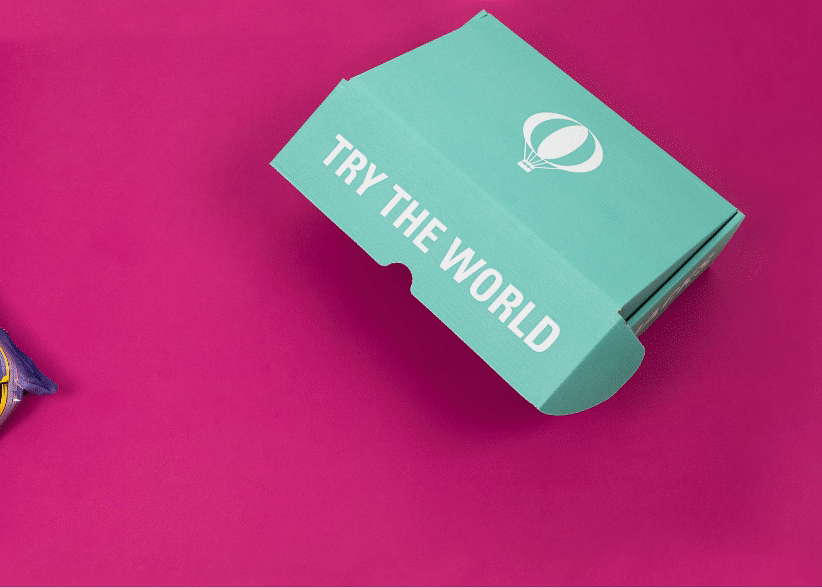How did you first gain an interest in food and cooking?
Everything started really young: I grew up on the outside of a little town and my family has always been about cooking everything at home. My grandmother was an excellent cook, and Mom followed. As a kid, especially living in the countryside, we had rhubarb, apple trees, currants, and so much stuff growing in the garden, that I eventually started helping out as well.
What an incredible childhood! Is it common for families in Sweden to cook everything from scratch?
We weren’t in the big city, so all the families that I knew did this and sat down to dinner at 5. In the afternoon, there would be a bunch of kids out playing, and in one second, everyone was gone because we all knew that it was dinner time. We ate at 5 because the kid’s TV shows came on at 6 or 6:30, so it allowed for time to eat and then bed. It was just a part of the lifestyle. On special occasions, we also had the Swedish smörgåsbord, which is a celebration or party. It’s way to socialize with friends and family. You spend hours eating, and it’s never a rush. There’s also a set way to eat it: you have different turns and go up to the table five or six times.
When did you start helping in the kitchen?
It started when I was around 4 or 5. We baked first, to stay away from the knives and all, and it was easier to get into doing crumbles, chocolate cake, and things like that. Then, when I got a little bit older, I went to savory as well.
When you cooked with your mom, did you know that you wanted to become a chef?
I wanted to become a chef or a fire pilot, so I’m on this career now! I’m really happy about that. It was one of those two things, and the cooking came first.
You’re known for both your professional beginnings in pastry and your current expertise in savory. How did you manage that transition?
I went into culinary school for savory, and back then, you had to have a good degree to get into culinary school. It wasn’t easy, especially since I wasn’t very good in school. I’m mostly dyslexic, so I worked very hard. But once I got in, I was able to use creativity, use my hands, and create. The rest of the things fell more into place, and school went from being hard to easy, in a way, because I got to do what I love to do. Then in my first job I slid into pastry. When I moved to savory, it was natural to bring what I had in pastry into the savory world. I don’t always find that it has to be so divided. If they’re combined, you might create something that might be very amazing and different.
So how would you describe your particular style of cooking?
I like to describe it as simple and not too complicated. At least in my point of view, a lot of my dishes have many elements, but I also try not to overcomplicate it or overdo it. If there’s a product that’s really nice, I don’t want to mess it up or turn it into something else. I love to highlight the flavor of the product.
Aside from cooking with your mom, what other memories do you have of your childhood in Sweden?
Lördagsgodis is a big thing there because eating candy in Sweden is only done on Saturdays. It was the only day you could eat candy, and you would look forward to that day the entire week. Some stores have a whole wall with hundreds of flavors of candy. You could get your little shovel and bag and pick and choose whatever you wanted. Every Swede has their own favorites. Even if there’s 100, I have five favorites. And in my family, my dad and I like completely different flavors! So when I moved to New York, my mom would send me candy, but after a while, I told her which ones I liked. Now they know which to send.
Are there any other foods that you miss from home?
Definitely. There is a difference in produce, and I miss Swedish dairy. It’s just not the same flavor-wise. Sometimes I try to find some things that we export from Sweden.
So what is it about Swedish food that makes it so special?
The way the produce is cared for has always been about treating it right from the beginning. The whole country is filled with farmers, and it’s always about taking care with love. We shouldn’t abuse what we have. The product comes out so much better if the animal can go outside and be happy and not be in confined places. So the quality of Swedish food always comes from the start and goes all the way to the finish.
This idea of respecting nature is very important in Sweden. Is it a part of any other Swedish traditions?
Fika is very famous. I’m not really sure who invented it or where it comes from, but I can imagine that it’s from coping with long winters. They can be very dark and gray and dull, so we have the opportunity to sit and have a pastry and coffee. We love coffee, and we drink a lot of it! Getting that opportunity to sit with friends and family, and take a breather and eat something nice and drink something warm is very important because of long winter days. It’s important to take a break before we move on again.
Do you have any favorite items from the box?
There’s a couple that I really like. The mustard reminds me a lot of food growing up. And I love the lingonberry jam, too! The saft reminds me of home because I grew up with an elderflower tree in the backyard, and my mom would always make elderflower juice for us. Then she’d preserve it and we’d have it all year.
Do you have any recommended ways of using the products?
There are so many ways of using it. I’m a big fan of cured salmon, or gravlax, and we always eat it with a sauce called hovmaster. It’s a mustard-based sauce, and I’d definitely use the mustard in that. The lingonberries, of course, with meatballs. The cookies, I’d just eat with coffee. The saft, I think, especially now with summer coming, mix with ice and some seltzer water, or make a cocktail if you have a day off! I turned the fudge into a sauce because I love ice cream and sundaes.






